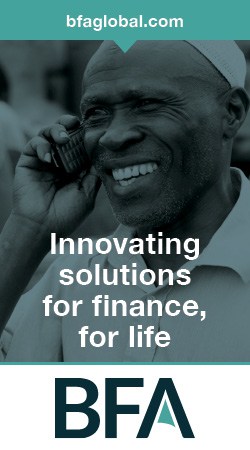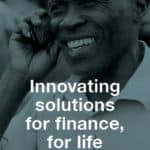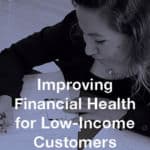Is Financial Inclusion Really Impacting the SDGs? This New Research Approach Could Offer an Answer
Earlier this week, Leora Klapper shared a blog about how the growing financial access measured in the 2017 Findex might impact the Sustainable Development Goals (SDGs). The article gave several examples of how financial services have enabled better nutrition, education and business opportunities. We would like to build upon her contribution and discuss a measurement framework which is encapsulated in a new UNCDF/BFA Focus Note “Pathways to a Better Life: The Intricate Role of Digital Finance in Reaching the Sustainable Development Goals” and the accompanying interactive graphic (please do click the link to see the evidence behind these pathways!) An objective of this methodology is to take account of the breadth of all potential and proven connections between financial services and the SDGs – and offers a method for substantiating those pathways.
We believe there are many more benefits from financial services than most people may realize. For example, in Fiji, where this new impact framework was conceived, financial access and usage of a broad range of service is relatively high among low-income, informally-employed people. In a recent interview, Liz recently spoke to a woman who runs a canteen in a small village near Suva, Fiji: She told Liz that she has not only taken several working capital microloans, but also has a bank account and pension account, and is an avid user of mobile money. She uses her phone to send money to relatives, make payments on her loans, top up her mobile airtime, pay bills like water and electricity, and deposit money into her pension account. Like many customers in emerging markets, she’s started using mobile money in this way within the last year or two – and as such, she is part of the global narrative on the increase of financial inclusion.
Unresolved Questions on the Impact of Inclusion
 Indeed, the World Bank’s Global Findex results from 2017 show steady success in getting more low-income people to use formal financial instruments. But as Klapper and other analysts have emphasized, many accounts remain dormant, and most transactions are person-to-person transfers or cash-outs. So while the achievements in expanding financial services across the globe should be celebrated, it is tempting to lose faith in financial inclusion as a tool for development. Is this growing rate of inclusion really making a difference in the lives of people like the canteen owner Liz met in Fiji? Is it moving the world, even slowly, toward the achievement of the SDGs?
Indeed, the World Bank’s Global Findex results from 2017 show steady success in getting more low-income people to use formal financial instruments. But as Klapper and other analysts have emphasized, many accounts remain dormant, and most transactions are person-to-person transfers or cash-outs. So while the achievements in expanding financial services across the globe should be celebrated, it is tempting to lose faith in financial inclusion as a tool for development. Is this growing rate of inclusion really making a difference in the lives of people like the canteen owner Liz met in Fiji? Is it moving the world, even slowly, toward the achievement of the SDGs?
Recent efforts to establish evidence that connects financial tools to development impacts have not been decisive. Some point out that while there is some sign of a connection between financial inclusion and a handful of SDGs (e.g. extreme poverty, gender equality and improved nutrition), the evidence for financial inclusion’s impact on other SDGs is even more sparse. Furthermore, financial inclusion programmes which target the SDGs sorely lack a convenient, standardized approach to nimbly appraise their impact. This issue is particularly challenging for development programs which operate in the adaptive management scenarios common in the dynamic environment of digital financial services.
A New Research Approach
The need for a better measurement approach was the impetus for establishing the Impact Pathways project, pioneered by the UN Capital Development Fund (UNCDF) with conceptual and technical support from BFA. This project embraces a “pathways” approach to unpacking the felt benefits and development outcomes experienced by users of financial services. The key goal behind this approach is to take into account the whole set of financial products that low-income customers use, to understand all the ways they might use each of them, and to assess the benefits that they experience. This comprehensive assessment might ultimately help detect any improvement financial services have on a range of SDGs.
We visualize this pathways approach in the dynamic infographic below which, moving from left to right, shows the ways financial tools can impact the SDGs. UNCDF and BFA are using data from providers that UNCDF supports to show the journey from financial product to use case to benefits to SDGs.
Our Impact Pathways project is a mixed-methods research project. We first analyze large transactional and balance data sets from financial service providers in order to assign active customers into known uses cases. We then use the results of this analysis in a phone survey to question customers about the perceived benefits they receive from the different ways they use the financial product. Finally, we link academic literature to map these reported benefits to the SDGs, providing the overall SDG footprint of that service.
Under the Impact Pathways project, UNCDF set out to explore the connection between financial service use cases and the SDGs, in the hope of illuminating the multiple ways that formal financial service users might be experiencing impact (or not!) UNCDF is now using this approach to measure the impact of several financial service providers it has supported in the Pacific, as well as one in Zambia. The findings from these exercises will be released in the next few months.
To read a detailed account of the framework and methodology, see a recently released focus note from UNCDF and BFA, “Pathways to a Better Life: The Intricate Role of Digital Finance in Reaching the Sustainable Development Goals” and the accompanying interactive graphic. This focus note discusses the logic, conceptual framework, caveats and detailed methodology behind this new approach to mapping the thorny trail between the use of financial services and the SDGs. UNCDF will also soon be providing a toolkit that will allow other stakeholders to deploy this method for themselves.
About UNCDF
The UN Capital Development Fund (UNCDF) makes public and private finance work for the poor in the world’s 47 least developed countries. The UNCDF Pacific Financial Inclusion Programme, which initiated this Impact Pathway project, has helped over two million Pacific islanders gain access to financial services and financial education. It achieves these results by funding innovation with financial services and delivery channels, supports policy and regulatory initiatives, and the empowerment of consumers. PFIP is jointly administered by the United Nations Capital Development Fund (UNCDF) and the United Nations Development Programme (UNDP) and receives funding from the Governments of Australia and New Zealand and the European Union. Read more at: www.pfip.org
About BFA
BFA is a global consulting firm specializing in financial services for people with low incomes. Our approach is to seek out, create and implement financial solutions to help people manage challenges and seize opportunities. We partner with cutting-edge organizations that touch the lives of low-income consumers, such as financial institutions, fintech companies and information providers. In creating solutions, we integrate our deep expertise of customer insights, business strategy, new technology, and growth-enabling policy and regulation. Founded in 2006, BFA’s clients include donors, investors, financial institutions, policymakers, insurers and payment service providers. BFA has offices in Boston, New Delhi, New York, Nairobi and Medellín. See more details about our people and projects at www.bfaglobal.com.
Editor’s Note: This article was voted by readers as one of NextBillion’s Most Influential Articles of 2019.
Liz Larson is the Results Measurement Advisor for the UNCDF Pacific Financial Inclusion Programme.
Daryl Collins is Managing Director and CFO of BFA.
Image courtesy of UNCDF and BFA.
- Categories
- Finance



